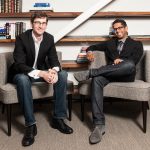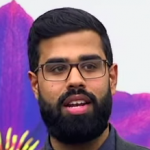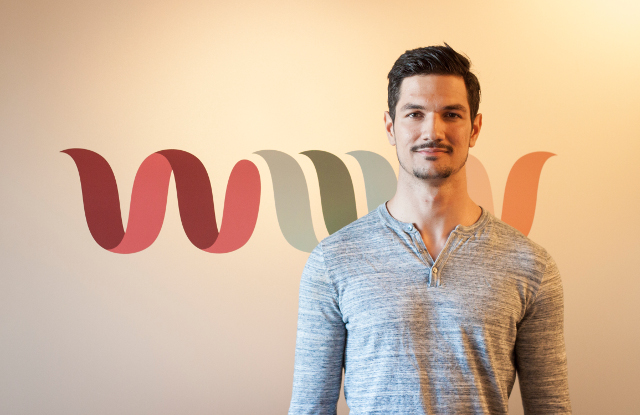A few weeks ago, Forbes released its comprehensive Top 30 Under 30 list, presenting the under-30-year-olds that are killing it across 20 verticals. Forbes went through at least 15,000 contenders before settling on 600 of the best.
We contacted the Canadians that made it to the list in tech-related verticals and spoke to them about their win, why they think they’re making a difference, and their big plans for 2016.
Enterprise tech

Ian Crosby, co-founder and CEO at Bench
Bench is meant to solve a major pain point for entrepreneurs: bookkeeping. When he was a student looking for work at video game companies, Crosby said the only job that they would give him was bookkeeping. “I realized that they gave me the job because no one else there wanted to do it. After doing some research into other small businesses, it was clear that bookkeeping and accounting was a problem area for most companies. Once you find a problem, all you just have to do is solve it and you’ve got yourself a company.”
Since Bench was started out of the TechStars incubator in New York, the product was built with the American market in mind, but working out of Vancouver, the team is figuring out an efficient way to organize Canadian sales tax in the accounting process for clients. But it doesn’t mean that he isn’t contributing to the ecosystem, as he plans to double Bench’s workforce from 200 employees to 400 in Vancouver.
“There’s been an energy within the walls at Bench since the announcement,” he said. “Recognition for what we’re doing is important at this stage in business, as we enter our fourth year in operation.”
On why startups are so quickly disrupting industries where big companies have dominated:
“It’s common that big companies, once they become the de facto solution, get complacent. I think that startups can recognize the gaps in what was recently made possible. For example, look at any big Canadian bank. I can think of one that just got a mobile app last year. But iPhones came out in 2007. The delay wasn’t because they couldn’t afford to build one, it’s that they didn’t see it as important at the time. This is the type of blind spot that a startup could take advantage of. Startups usually only do one or two things, but they can do them extremely well. If they tackle the opportunities quickly, they can disrupt and industry, and work to be a real player.”
On what separates his platform from competitors:
“Our product is centered around intuitive, ethical design. At Bench, we are at the intersection of two extremely complex systems: accounting and technology. It is our duty to ease the frustration and pain that our clients have around each. We do this by providing an elegant software and a team of real human bookkeepers. Our white-glove service completely removes a problem the lives of entrepreneurs. This had led to a lot of referral business and rapid growth.”
Health care

Daniel Penn, founder at Shift Health
Penn started Shift Health with his mother, Dr. Sandy Whitehouse, four years ago. Penn’s mother is specialist physician with over 25 years of experience in the field and was working with a designer on a new way for doctors and patients to communicate. The pair realized that patients and families were suffering unnecessarily because healthcare organizations had inadequate communication methods that alienated diverse population.
“I feel honoured to win this award and represent Shift Health and the Canadian healthcare start-up community. I wouldn’t be here without their support,” Penn said.
What problem Shift Health is solving:
“Shift Health provides a comprehensive, accessible, cost effective Patient Reported Data solution to effectively engage the diversity of patients that health care organizations are responsible for, from the beginning to conclusion of their patient journey. Shift Health has developed a powerful and unique interactive platform to not only to engage all patients in a population regardless of age, language, or literacy, but to enable them to be actively involved in the care process so outcomes are improved and costs are lowered. With assessments, quality improvement surveys, and patient decision support tools, TickiT, makes patients feel comfortable and heard.
“Governments and Health Organizations in Canada, USA, Australia and Great Britain, through legislation and new patient engagement organizational bodies, have acknowledged that engaging patients as partners in care is no longer a nice to have, but critical to maintain standards, lower costs and improve efficiencies. Understanding the patient more fully through collecting Patient Reported Data, like collecting and documenting personal information directly from the patient rather than by interview and transcription, is a new approach to address this issue. While funding models are different in both systems, the main goals for organizations to improve outcomes, lower costs are the same.”
Plans for 2016:
“This year we are looking to continue to grow upon our success in the US market and continue to enable healthcare professionals and organizations to optimize a new patient centric model of care. We are really excited about the projects we are working on with our clients and are looking to continue to help other organizations adopt a patient centric model of care.”

Dhananja Jayalath and Chris Wiebe, co-founders at Athos
Jayalath and Wiebe are graduates from the University of Waterloo’s electrical engineering program, and, $3.5 million in seed funding from fellow electrical engineering graduate Chamath Palihapitiya’s Social+Capital Partnership, created wearable tech workout clothing. Athos’ clothing, which include heart rate monitors, have 12 muscle sensors on the shirts and eight in workout pants. Now based in Silicon Valley, the company has so far raised more than $50 million.
What influenced their decision to move to the Valley:
“The biggest influence for the move was that our seed investment firm (Social Capital Partnership) is located in Palo Alto. Social Capital has a great incubator where we were able to really concentrate on getting Athos off the ground. The reason we stay is because of the culture, the rate of innovation and the concentration of talented people who have been through growing a startup. People in the Valley are well experienced in scaling companies and have a much higher tolerance for risk — a combination that is rare in other places.”
On how they became a team working on Athos between classes at U of W to raising $50 million to date:
“The key factor is the team that we’ve been able to put together at Athos. We have been fortunate to find an amazing set of people who share a passion for innovation and for creating the future. For centuries, clothing has served a single purpose, we believe that it’s time for it to do something else and for us, that’s help people live healthier lives.”
Games

Devin Horsman, technical director at River Studios Canada
Horsman co-founded Twisted Oak Studios with Matthew Jewkes in 2009 to work on cutting edge technology problems “with a bunch of other top-tier programming weirdos,” working on applications of health research, cryptography, AR, and gaming across multiple platforms and hardware. After the Oculus kickstarter, Horsman noticed the potential of VR, and got a demo from Nate Mitchell and Palmer Luckey from Amsterdam. Twisted Oak developed the popular Two Dots iOS game and the mobile VR app VRSE. Twisted Oak was acquired by River Studios in August 2015 and is now River Studios Canada. Horsman didn’t expect to win when he heard he had a nomination, but that morning he woke up to “a little more red circles on my phone than usual.”
What River Studios Canada does in VR that others don’t:
“River occupies a special position in the VR world because of the unique combination of technology accelerator, studio, and investment firm (Rothenberg Ventures) under one roof. We have better insight into what VR technologies are up and coming because of the accelerator and a greater ability to tackle opportunities that present themselves in an agile manner because of our symbiotic relationship with our investors. River studios completes the picture by adapting those technologies for production, and working closely with amazing internal and external creatives to make bleeding edge VR content.”
Plans for 2016:
“We’re creating empathy driven experiences that aim to inspire and amaze – along the way there are an enormous amount of interesting technical problems to sink our teeth into. I’ll be focused on attracting even more top developers to our growing team and providing technical direction on projects developed simultaneously for the Rift, Vive, and GearVR platforms. I’m especially interested in empowering our creative team with new technology that helps them tell the stories they dream of more effectively and efficiently.”

Ben Kane, co-founder at Steelcrate Games
Kane and his co-founders Allen Pestaluky and Brian developed the Keep Talking And Nobody Explodes VR game, which requires the player wearing the headset to defuse a ticking time bomb in a virtual room while the other players give instructions on how to defuse the bomb, even though they can’t see it. While only a 48-hour prototype, the game managed to get a lot of press and positive reviews from players. They decided to pursue the project full time and founded Steelcrate Games. After learning that he earned a spot on the Top 30, Kane said that it spurred him back to work quickly to prove that it wasn’t just a fluke.
On why Keep Talking and Nobody Explodes was such a hit:
“We originally made Keep Talking and Nobody Explodes with the intent that early virtual reality adopters could use it to introduce VR to their friends – a way to bridge the gap between enthusiasts and the unconvinced. In practice, we’ve found that it applies much more broadly and gamers are using it as a way to bring in their friends and family who wouldn’t otherwise play games at all. It’s hard to say ‘no’ when a friend or relative hands you a manual and asks for your help to defuse a bomb. I think it’s this intrigue paired with accessibility that gets people hooked, at which point the game becomes focused on communication, and personalities can take over. Players create entertaining, stressful, and funny stories from their own experiences in way that is memorable to them.”
How they approach game design at Steelcrate and maintain a grassroots culture:
“We’ve come at design from a lot of different angles: brainstorming, paper prototypes, small private playtests, exhibiting at conventions, and so on. Each has their own value and we try to focus on what we want the experience to be for players and work backward from that. Player feedback is the most important part of our design loop by far, and there’s no question that demoing the game at conventions to thousands of people for the bulk of last year has helped shape the game into what it is today. Thanks attendees!
“We’re still just the three co-founders working together the same way we always have. There can be a lot of overhead associated with growth and our resistance to that for the time being has allowed us to focus as best we can on the part we really enjoy: making games.”
Social enterprise

Anisa Mirza, CEO and co-founder at Giveffect
On her LinkedIn profile, Mirza, a winter 2015 alumni of Y Combinator, describes Giveffect as a “Shopify for nonprofits.” Giveffect builds software for nonprofits, and offers platforms from fundraising and volunteer onboarding to back-end process management reporting. Mirza has worked for both big and small nonprofits, and while she said that some used complex nonprofit software systems, some only had basic software.
“In either case, what was consistent across all organizations I worked at was how crappy the software was. It seems so unfair and so wrong that staff and management at these organizations had to rely on primitive and archaic software to manage their most important day-to-day operation tasks,” she said.
The company already boasts clients like Habitat for Humanity, United Way, and Big Brothers, Big Sisters.
Giveffect’s plans for 2016:
“2016 is a year of scaling operations further at Giveffect. We are hiring aggressively at our San Francisco HQ and will continue expanding the team to meet client product demand and onboarding. 2016 is also a year of adding 2 new additional systems to our current 4-in-1 system. It is going to be an exciting year!”
Her advice for other startups looking to enter the underserved nonprofit market:
“Know that it is a hard sector to get into to. Very hard. So you should hopefully have someone on the team with domain expertise and/or history working with nonprofits before embarking on this journey. You should also be prepared to devote the next eight to 10 years of your life to this, if you are going to make any significant impact with your startup.
“Build a product with integrity. That’s honestly the only way you’ll last in this space. Too many startups come up with what I like to call ‘hype-products’ and just try to aggressively market themselves to nonprofits. I can tell you, nonprofit executives can see through that.
“This last piece of advice is not specific to startups pursuing the nonprofit sector but applies to any startup. It is probably the most important piece of advice: make something people want!”

Gavin Armstrong, president and CEO of Lucky Iron Fish
Lucky Iron Fish develops a small ferrous iron fish that can be placed in a cooking pot and give families 75 percent of their daily intake of iron for five years. As the company says that 3.5 billion people suffer from iron deficiency, Armstrong is dedicated to sending the Lucky Iron Fish to developing communities around the world.
Armstrong maintains that his idea isn’t a new innovation. “Adding iron to the cooking pot to help with iron deficiency is a practice that dates back to 300 B.C. However, this technique has since been lost in current cultural practice,” Through a research project at the University of Guelph, his team developed a a tool that releases a constant and safe amount of iron per use. “To help with the compliance we shaped the iron ingot like a fish, which is seen as a symbol of luck in Cambodia.”
How he ensures that the business is both viable and also making the change in the world that he wants to see:
“I think it is very easy for startups to have a strong social conscience. The challenge is when you transition to scale your social ideals become challenged with fiscal realities. When we started to grow quite quickly we realized that the cost of some of our social impacts became too high and threatened to prevent our overall goal of helping people with iron deficiency.”
“However instead of giving up we looked at ways we could still scale at a sustainable rate, and still fulfilled our social mandate. One of our companies cultural values is to always look for ways to do something better. Better for efficiency, for the bottomline, or for the planet. I am proud to say that though we have shifted away from our original impact areas, we still have an incredible overall social impact as a company. In 2014, we became a B-Corp and have consistently ranked as one of the highest B-Corp rated companies around the world.”
How he felt when he heard that he made it to the list:
“I was honestly speechless, which does not happen to me very often. It was both humbling and validating. I felt humbled to be included on a list with 29 other change makers who are truly using business to make the world a better place. I felt validated because I have always believed that businesses have the power and the resources to solve some of the planet’s greatest challenges, and I created the Lucky Iron Fish company with that vision. We have a social aspect embedded in every aspect of our business and it was phenomenal to see Forbes recognize that.”
On next steps for 2016:
“We plan to expand our operations into other major markets including India, Laos, and Latin America. We are also expanding the availability of our fish into retail channels in North America. Last but not least, we will also start three new clinical trails that have been funded through the Saving Lives at Birth program run through the Bill and Malinda Gates Foundation.”
Marketing and advertising

Andrew Au, president of Intercept Group
As millennials are now the largest generation in the global workforce, Andrew Au helps Fortune 10 companies understand how to better understand the tech-savvy generation. Intercept is currently valued at $10 million, and his youth marketing agency banked $5 million in the most recent fiscal year.
“I grew up reading all of the Forbes lists. To see my name on one, is literally a dream come true. I’m so honoured and humbled to be surrounded by such talented and amazing people,” Au said.
How he is helping big brands tap into the millennial market:
“The number one struggle (with brands) is realizing their brand was not designed for today’s marketplace and accepting that brand reinvention is inevitable. Here are the facts. Millennials are driving massive marketplace changes; mobile commerce, wearables, and on-demand economy.
“We help brands understand, engage and evangelize the millennial generation. Everything we do is driven by powerful audience insights and data velocity. We own one of the largest syndicated millennial studies called POME (point-of-market-entry) which trends generational trends, lifestyle habits, purchasing trends. We take these insights and turn them into actionable marketing campaigns.”
On the advantages of being a small agency:
“It’s your time. The legacy agency model is dead. It’s a competitive climate for every industry. Brands are looking for smaller agencies who can do it better, faster, and cheaper than the big shops. Use your size to your advantage.”
Manufacturing

Louis-Victor Jadvaji, co-founder of Wiivv Wearables
Along with his Seattle-based co-founder Shamil Hargovan, Jadavji is developing custom-made 3D printed insoles in San Diego. Users can take photos of their feet and the insole will be manufactured to fit.
“I don’t view this as an individual award. This is a testament to the tremendous effort made by the entire Wiivv team,” said Jadavji. “I would’ve never been recognized on my own – very grateful for who we have, all of them are like family.”
Recently, Wiivv raised a $3.5 million seed round and is valued at $12 million. They are also in the midst of a Kickstarter campaign for early adopters.
On seeing the potential for 3D printing to solve manufacturing issues:
“3D printing is an interesting manufacturing technology, but without a software system for customizing 3D models, like the one unique to Wiivv, the bottlenecks would make scaling for custom products impossible. 3D printing is expensive, so the other key is to modularize as much as possible with mass-made parts to complement a core 3D printed part. Imagine our 3/4 insole today (now mostly 3D printed) becoming less than 20 percent 3D printed over time as we hone in further on supporting the arch and neutralizing the foot with more and more minimal design. Of course, doing all this while even improving product benefit.”
On plans to scale for 2016:
“Beyond being a product company, Wiivv is also a platform for mass customizing anything that interfaces with the human body. We are in the process of securing several major development partnerships with brands and providers that can 10x-100x our potential distribution. The platform is also being leveraged to quickly iterate and build new and exciting products under the Wiivv brand. The custom 3D printed insole is revolutionary, but it is a first “step” towards building an expansive portfolio. Our next announcement will turn the world on its head — we are sure of it. To make the announcement this summer, we want to reach our stretch goal on Kickstarter.
“We are a tech company with a lot of substance. We take pride in having built a technical team that scares our competition and impresses investors and partners. Continuing to build a strong innovative culture is paramount to our long-term success. Wiivv will reach massive scale, and building the infrastructure required to fundamentally change how products are made is an exciting technological challenge.”
Consumer tech

Jessica Scorpio, founder and VP of marketing at Getaround
Currently based in San Francisco, Getaround lets car owners rent their vehicles for hourly, daily, and weekly rates. To date, Getaround has raised $43 million and includes backers like former Google chairman Eric Schmidt and Yahoo CEO Marissa Mayer. Before founding the company, Scorpio, who majored in political science at Carleton University and did a grad program at Singularity University, worked for the Canadian government.
Scorpio said that what has separated the Getaround service from competitors, besides instant booking, is its Getaround Connect hardware, which is installed in every Getaround car and allows renters to lock and unlock Getaround rentals from their phone.
“As far as innovation goes, being in Silicon Valley is inspirational in the sense that I get to see what a lot of other startups are doing to keep on top of their game and learn from the steps they take,” said Scorpio. “We also strive to stay innovative at Getaround by openly asking for product feedback and features they are interested in. Our employees and our community don’t hold back when it comes to letting us know what they want and that has greatly helped us keep innovation in mind when we make changes.”
On how her time working in Canada helped her prepare to be a founder in the Valley:
“I spent a lot of time working in Canadian politics and that taught me some useful skills surrounding negotiation and overall navigation in critical conversations. These skills have come most in handy while raising money for Getaround and negotiating partnerships with big name auto companies like Audi.”
Tips for Canadians wanting to start companies or raise rounds in the Valley:
“One hurdle that most people run into is the visa issue, getting a visa that allows them to work in the US and start a company. I ran into it and I know many other founders who have had the same problem.”
“My best piece of advice is to get the help of immigration lawyers in this scenario from the start. Another best practice is not to give up. While it can be tough to get a visa, the hard work pays off and Silicon Valley is an amazing place to get the chance to work in, especially as a startup founder.”
“Because this is so close to home for me, I’m actively supporting the recent push for a startup visa, I believe disruptive entrepreneurs can make big waves in the US.”
Retail and ecommerce

Satish Kanwar, director of product for Shopify
Back in 2013, Kanwar’s design firm Jet Cooper was acquired by Shopify to improve the ecommerce platform’s look and feel. Since then, he’s proven himself as an essential member of the Shopify family as the director of product for the company. Kanwar was noted by Forbes for being instrumental in launching Shopify’s Facebook and Pinterest’s Buy buttons. Check out BetaKit’s writeup on the day of the win.


